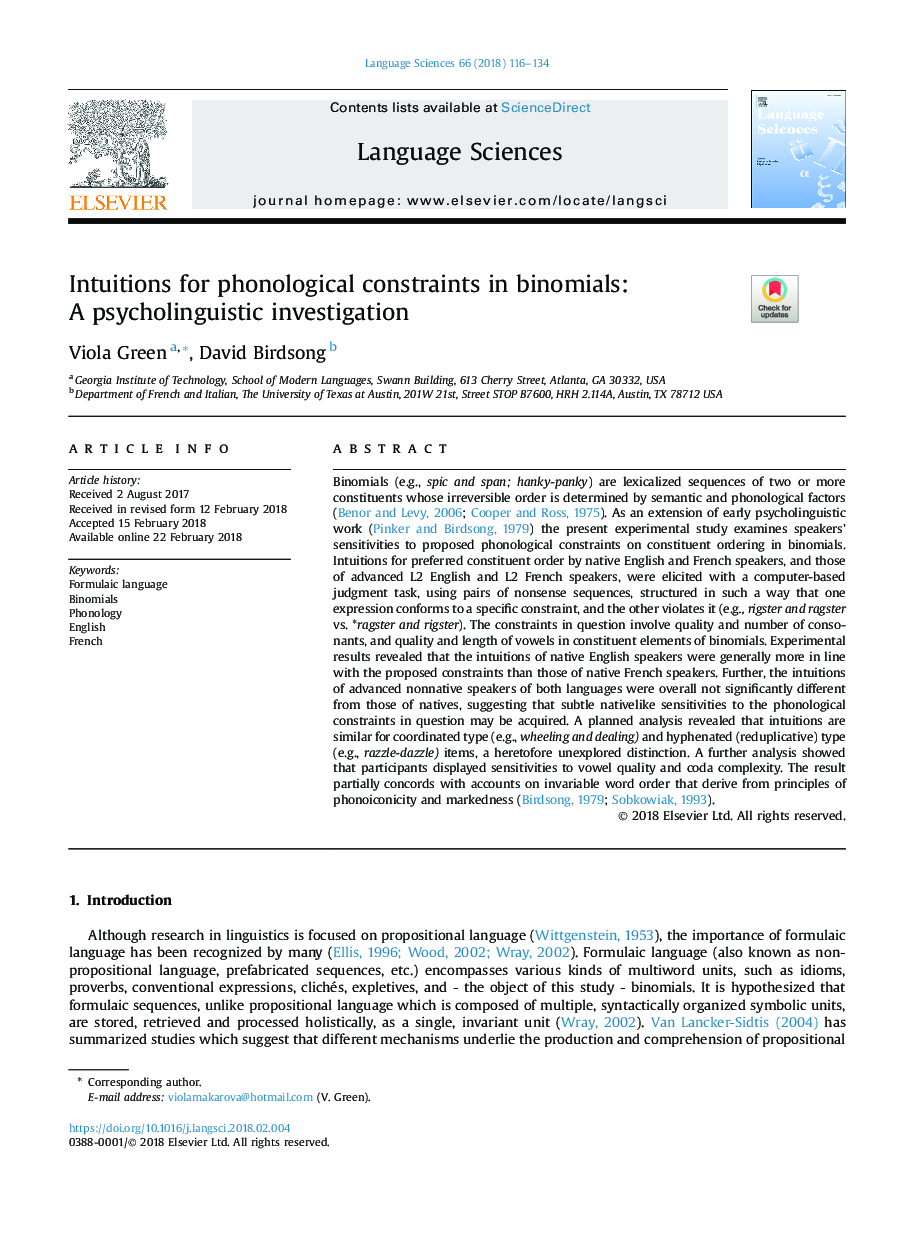| Article ID | Journal | Published Year | Pages | File Type |
|---|---|---|---|---|
| 7533815 | Language Sciences | 2018 | 19 Pages |
Abstract
Binomials (e.g., spic and span; hanky-panky) are lexicalized sequences of two or more constituents whose irreversible order is determined by semantic and phonological factors (Benor and Levy, 2006; Cooper and Ross, 1975). As an extension of early psycholinguistic work (Pinker and Birdsong, 1979) the present experimental study examines speakers' sensitivities to proposed phonological constraints on constituent ordering in binomials. Intuitions for preferred constituent order by native English and French speakers, and those of advanced L2 English and L2 French speakers, were elicited with a computer-based judgment task, using pairs of nonsense sequences, structured in such a way that one expression conforms to a specific constraint, and the other violates it (e.g., rigster and ragster vs. *ragster and rigster). The constraints in question involve quality and number of consonants, and quality and length of vowels in constituent elements of binomials. Experimental results revealed that the intuitions of native English speakers were generally more in line with the proposed constraints than those of native French speakers. Further, the intuitions of advanced nonnative speakers of both languages were overall not significantly different from those of natives, suggesting that subtle nativelike sensitivities to the phonological constraints in question may be acquired. A planned analysis revealed that intuitions are similar for coordinated type (e.g., wheeling and dealing) and hyphenated (reduplicative) type (e.g., razzle-dazzle) items, a heretofore unexplored distinction. A further analysis showed that participants displayed sensitivities to vowel quality and coda complexity. The result partially concords with accounts on invariable word order that derive from principles of phonoiconicity and markedness (Birdsong, 1979; Sobkowiak, 1993).
Related Topics
Social Sciences and Humanities
Arts and Humanities
Language and Linguistics
Authors
Viola Green, David Birdsong,
